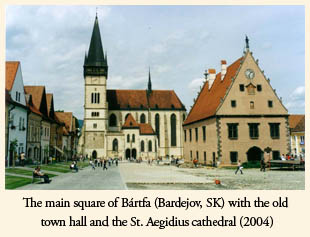 In the Upper Hungarian town Bártfa in the last years of the 16th century there was an exceptional situation of two printing shops existing side by side both issuing printings in Latin script: one was the Gutgesell press founded in 1577 and the other the newly erected press of Jakab Klöss, from 1597. This phenomenon can be explained by ist advantageous geographical situation, as this was the Hungarian free royal town lying nearest to the borders of Poland, with a vivid commercial life.
In the Upper Hungarian town Bártfa in the last years of the 16th century there was an exceptional situation of two printing shops existing side by side both issuing printings in Latin script: one was the Gutgesell press founded in 1577 and the other the newly erected press of Jakab Klöss, from 1597. This phenomenon can be explained by ist advantageous geographical situation, as this was the Hungarian free royal town lying nearest to the borders of Poland, with a vivid commercial life.
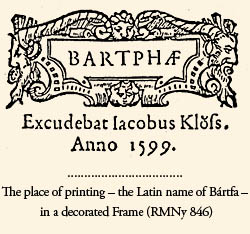 Jakab Klöss was not the following owner of the Gutgesell-press, because his printing shop established in 1597 was well equipped with a typographical material entirely different from that of David Gutgesell. For the same reason he did not establish his printing shop from the remains of the Vizsoly press, as the latter was still active until 1599. These former assumptions were based on the fact that later (in 1608-1609) a part of the printing types and ornaments of the former Vizsoly press appeared in fact with Klöss, while ornaments from the Gutgesell press can be recognized from 1610 in Kassa (Košsice, SK) in the printings of János Fischer son-in-law of Klöss.
Jakab Klöss was not the following owner of the Gutgesell-press, because his printing shop established in 1597 was well equipped with a typographical material entirely different from that of David Gutgesell. For the same reason he did not establish his printing shop from the remains of the Vizsoly press, as the latter was still active until 1599. These former assumptions were based on the fact that later (in 1608-1609) a part of the printing types and ornaments of the former Vizsoly press appeared in fact with Klöss, while ornaments from the Gutgesell press can be recognized from 1610 in Kassa (Košsice, SK) in the printings of János Fischer son-in-law of Klöss.
It can be explained with the supposition that Klöss might have given as a dowry for her daughter some of his own and some of Gutgesell's ornaments, however, Jakab Klöss senior himself never used anything from Gutbesell's previous workshop.
Likewise, the assumption should be revised that Klöss was formerly the apprentice of 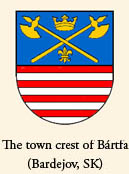 Bálint Mantskovit at Vizsoly while the Hungarian Bible was in press, and later, until establishing his own press in Bártfa, he would have worked in Kolozsvár (Cluj, RO) in the Heltai-office. As to the former supposition some printing types and ornaments would serve as proofs, as to the other a printing of the Heltai-press in which the name of Klöss occurs. In fact it is very likely that Klöss was in connection with Mantskovit at Vizsoly, perhaps he took part in the printing of the Bible, and perhaps his first wife was Mantskovit's daughter. However, his connection with Kolozsvár is not proved, and a several years' stay in of
Bálint Mantskovit at Vizsoly while the Hungarian Bible was in press, and later, until establishing his own press in Bártfa, he would have worked in Kolozsvár (Cluj, RO) in the Heltai-office. As to the former supposition some printing types and ornaments would serve as proofs, as to the other a printing of the Heltai-press in which the name of Klöss occurs. In fact it is very likely that Klöss was in connection with Mantskovit at Vizsoly, perhaps he took part in the printing of the Bible, and perhaps his first wife was Mantskovit's daughter. However, his connection with Kolozsvár is not proved, and a several years' stay in of 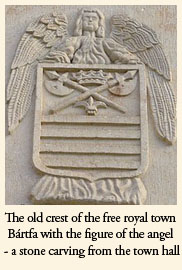 Klöss in Kolozsvár can not be imagined while he was a town mayer in Bártfa in 1596. The explanation why the forewordy by Klöss occurs in the Cisio printed in Kolozsvár is, that it was taken over and reprinted from an earlier Bártfa edition of the same work.
Klöss in Kolozsvár can not be imagined while he was a town mayer in Bártfa in 1596. The explanation why the forewordy by Klöss occurs in the Cisio printed in Kolozsvár is, that it was taken over and reprinted from an earlier Bártfa edition of the same work.
The major part of the press founded by Jakab Klöss in 1597 falls to the 17th century. Jakak Klöss senior was followed by his son and both of them were supported by town magistrate of Lutheran confession. Still, there were significant works issued by Jakab Klöss sen. in the first years of his activity - altogether 16publications. Among them several works by Ioannes Bocatius can be found like Bellum (1597) or Disputationes (1598), the Lutheran sermons by Kristóf Soós in Hungarian (RMNy 828), or Adagiorum, the first book containing Hungarian proverbs by János Baranyai Decsi (RMNy 815) Although there are quite a number of printings which bear only the name of the town Bártfa without printer, on the basis of their typographic character they can be easily ranged among the products of the Klöss or the Gutgesell printing shop rerspectively.
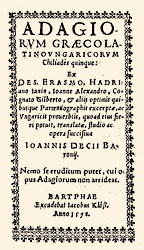 |
One of the most significant book issued by Klöss is the Adagiorum containing the first collection of Hungarian proverbs by János Baranyai Decsi (RMNy 915) |
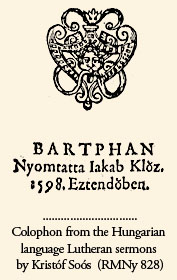
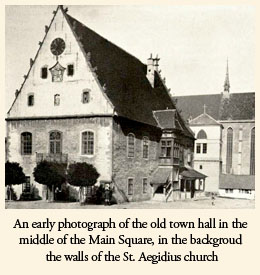 The books printed by Klöss are mostly decorated with frames composed from printers' flowers. There is only one exception the Postillas by Kristóf Soós which is decorated with a woodcut frame, probably the work of a local artist. Perhaps he was also the master of the small frame in which the Latin name of Bártfa can be read (RMNy 846)
The books printed by Klöss are mostly decorated with frames composed from printers' flowers. There is only one exception the Postillas by Kristóf Soós which is decorated with a woodcut frame, probably the work of a local artist. Perhaps he was also the master of the small frame in which the Latin name of Bártfa can be read (RMNy 846)
Beside these woodcut frames in the first years the Klöss-press used three tail-pieces, some printers' flowers and two series of initials. He had seven type faces including Greek types as well. There is only one type that is identical with the one used by Mantskovit in Vizsoly, but even this type can be found simultaneously in Vizsoly, therefore it may be supposed that either Mantskovit or Klöss had also matrices of this type. This small scale Italic type of Klöss was later further distributed and a part of them was handed over to his son-in-law Johann Fischer is Kassa (Košice, SK), and from there it was later purchased by Lorenz Brewer in Lőcse (Levoča, SK).


- Title-page frame - Tail-pieces - Initials - Printers' flowers - Printing types -
- back to the top -


TITLE-PAGE FRAME
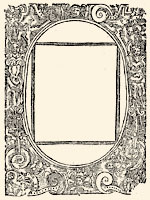 |
For the first time the Postillas by Kristóf Soós were decorated with this woodcut frame, but it was still used by the Klöss-press throughout the 17th century
|


- Title-page frame - Tail-pieces - Initials - Printers' flowers - Printing types -
- back to the top -


TAIL-PIECES


- Title-page frame - Tail-pieces - Initials - Printers' flowers - Printing types -
- back to the top -


INITIALS


- Title-page frame - Tail-pieces - Initials - Printers' flowers - Printing types -
- back to the top -


PRINTERS' FLOWERS


- Title-page frame - Tail-pieces - Initials - Printers' flowers - Printing types -
- back to the top -


PRINTING TYPES


- Title-page frame - Tail-pieces - Initials - Printers' flowers - Printing types -
- back to the top -

LITERATURE:
SOLTÉSZ Zoltánné: A XVI. századi bártfai könyvdíszek. In: Magyar könyvszemle 1956. 233-243.
MAJLÁTH Béla: A sorsvető könyvek és egy ismeretlen XVI. sz. magyar Fortuna. In: Magyar könyvszemle 1887. 1-36.
BORSA Gedeon: Hol és mikor nyomtatták az eddig ismert két legrégibb magyar sorsvető könyvet? In: Magyar könyvszemle 1964. 348-354.
BORSA Gedeon: A "Fortuna" sorsvetőkönyv eredete és utóélete. In: Magyar könyvszemle 1966. 75-81.
FARKAS Ágnes - V. ECSEDY Judit: A kassai nyomda 1610-1622 közötti munkássága. In: Országos Széchényi Könyvtár Évkönyve 1986/1990 (Budapest 1992) 351-360.
V. ECSEDY Judit: A régi magyarországi nyomtatványok betűi és díszei. Budapest 2004. (Hungaria typographica 1.)